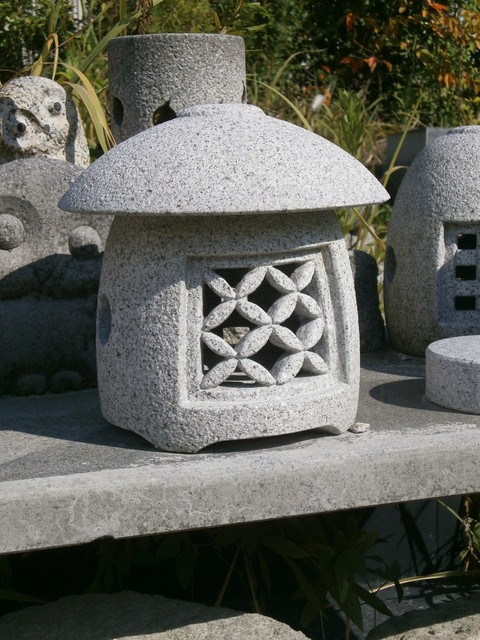始まりは室町時代後期に遡ります。その後、安土桃山時代には、現在の愛知県にあった岡崎城主が、城下町の整備のため河内、和泉の石工を招き、石垣や堀を造らせました。
この石工たちが、その技術・技法に磨きをかけ春日型灯籠、六角雪見型等岡崎石工品の原型を作りました。19世紀の初めに29軒だった石屋は、19世紀の終わりには約50軒に増え、戦前、最盛期には350軒を数えましたが、最近は減少しつつあります。

The origins of this craft date back to the latter part of the Muromachi period (1391-1573). It was during the following Momoyama period (1573-1600), however, that the lord of Okazaki castle brought in skilled stone masons from Kawachi and Izumi to carry out some improvements to the surrounding town and had stone walls and moats built. As a way of perfecting their skills and techniques these masons carved Kasuga style lanterns and hexagonal flat-topped Yukimi or "snow viewing" lanterns and it was these that became the prototypes for Okazaki's own stone-carving craft. By the beginning of the 19th century there were 29 stone carving workshops and by the end of the same century there were 50. Before World War II at its peak the town boasted 350 workshops, a number which of late has declined somewhat.
The principal item made is the stone lantern. They are an intricate composition of both line and surface embodying a simplicity of both linear and curvilinear beauty. To this is added highly skilled decorative carving providing a delicate elegance to this carved stone craft. Pagodas in miniature are also made as are receptacles for water or plants. There are now 22 firms employing 161 people sustaining this worthy stone craft.
出品作品

置灯かり